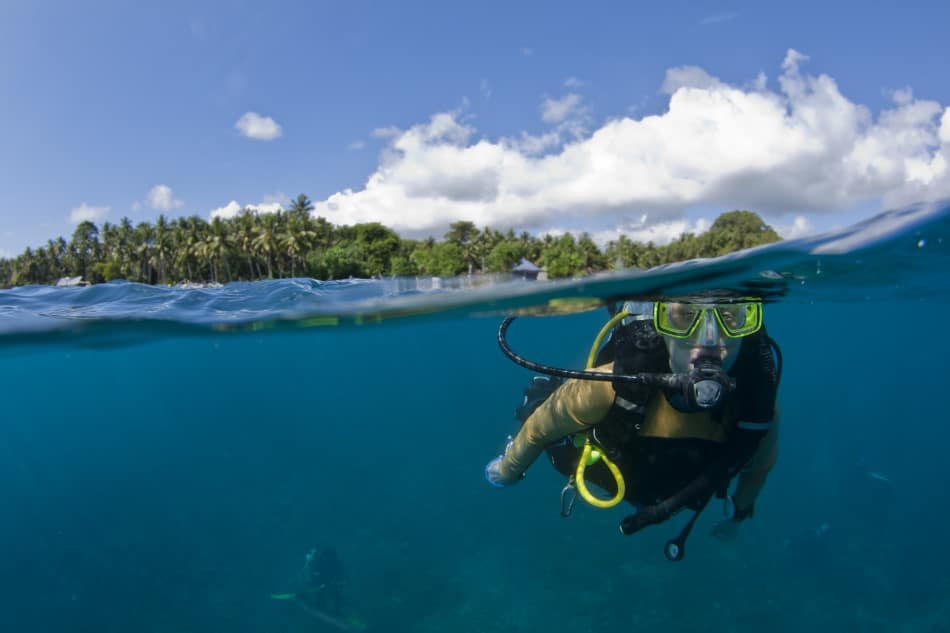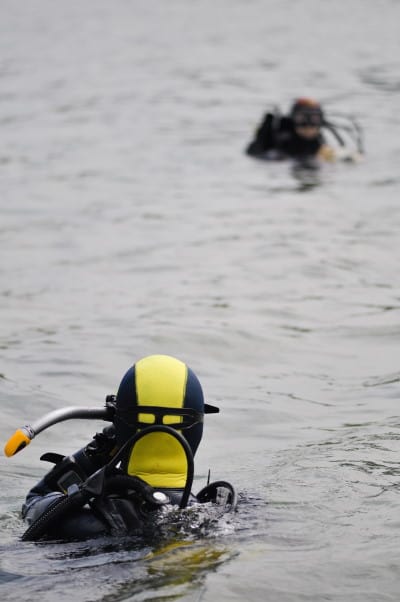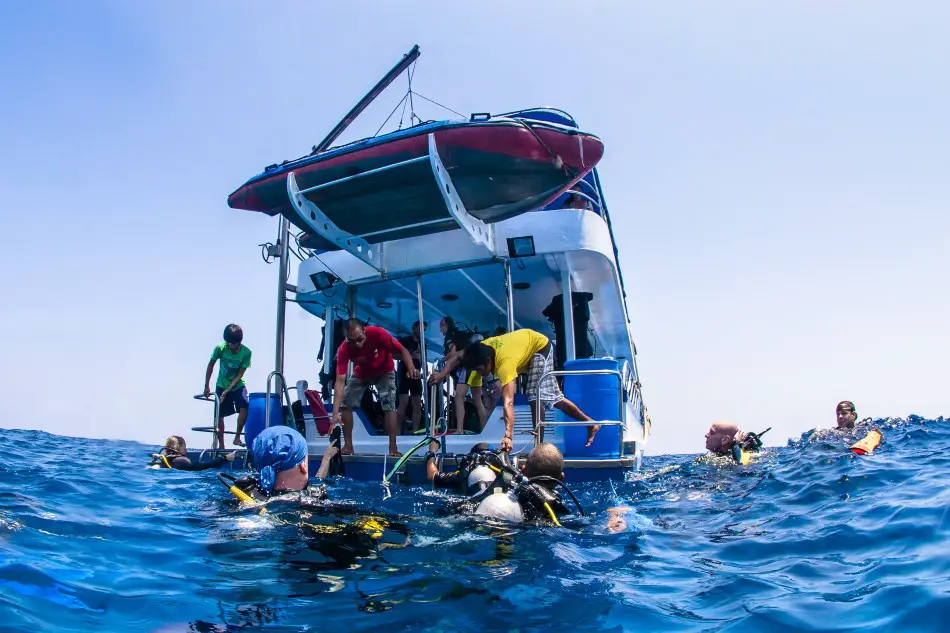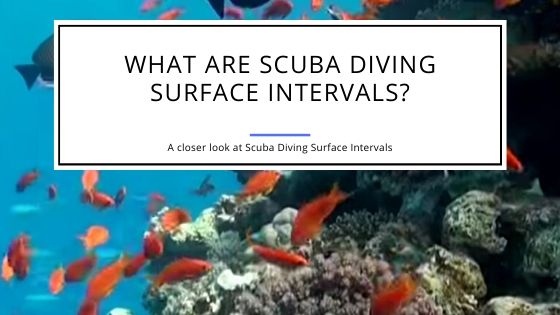Scuba Diving Surface Intervals – What Are They?
While beginners may dive once a day, most professional divers dive multiple times a day. However, you can’t just get back in the water immediately after returning to the surface. You have to let your body rest and recover between repetitive dives in what is called a surface interval. What exactly are surface intervals that and what do they mean for your diving?
Your body needs to rest and off-gas (release stored nitrogen) before you’re ready to dive again. This is where your scuba diving surface intervals come in:
What is a Surface Interval?
A surface interval is basically the time a diver spends outside the water between two consecutive dives. This is when the compressed nitrogen absorbed in the diver’s body is released. By the end of the surface interval, the nitrogen levels in a diver’s body are much lower than those when the diver first got out of the water.
When does it Begin and End?
The surface interval begins the moment divers return to the water surface and start breathing on their own without the help of a regulator. Even if the diver is floating on the water surface for a while post-dive, it is still a part of the surface interval. Your dive computer starts timing the surface interval from the moment you reach the water surface.
When the diver begins his or her descent into the water, the surface interval comes to an end. Keep in mind that there will be some residual nitrogen from the last dive left in your body and adjust your minimum surface interval accordingly to allow the off-gassing of the nitrogen between repetitive dives.
To find out how much nitrogen you have left in your body at the end of the surface interval, you will need to calculate your pressure group and the residual nitrogen time (to determine the amount of nitrogen that was initially absorbed in the body during the dive).
What Impacts the Length?
According to PADI, even if a diver has been deep diving, they can consider themselves to be nitrogen-free after a maximum period of 6 hours. For shallower, less aggressive dives, this interval may be shorter than 6 hours and therefore require a shorter minimum surface interval between repetitive dives.
Depth
Using information from your dive computer, such as your dive profile, the amount of time spent underwater and the depth reached, helps you calculate the pressure group and residual nitrogen time. These figures will help you plan how long your surface interval needs to be.
For most dives, the minimum surface interval is around an hour long. By this time, most of the nitrogen has left the body and won’t have a significant impact on the next dive.
If your first dive was deep enough to reach your Non-Decompression Limit (NDL) or even crossed it by a little and your next dive is also going to be a deep one, you’ll need a surface interval of at least 2 hours.
Time Underwater
The more time you spend underwater, the more nitrogen you are likely to absorb. The more nitrogen you absorb, the longer it will take to release it which will increase your minimum surface interval between repetitive dives.
Check the depth from your dive computer as well as the water pressure and find out the residual nitrogen time. The deeper you dive, the longer your surface interval will be.

Number of Dives
Think of the human body as a sponge when it comes to absorbing compressed nitrogen. Remember, when a sponge is dry, it takes longer to get wet, but an already wet sponge will soak up water immediately.
With every dive, your body absorbs more compressed nitrogen and your surface intervals become longer to dispel as much of this as possible. This also (or specifically) applies to recreational divers since aggressive divers may return to the water after just a 10-minute surface interval.
Cold vs. Warm Water Diving
Water temperatures are lower than atmospheric temperature and the human body exerts more energy to stay warm. This means breathing deeply and taking in more nitrogen.
The colder the water, the more effort a diver will exert in staying warm. With increased consumption of compressed air, the nitrogen content in the diver’s body also increases. This increases the residual nitrogen time and the length of the minimum surface interval.
Flights
Traces of nitrogen remain in a diver’s body for a few hours after the dive. Therefore, it is advised that divers should not fly for at least 12 hours after diving (18 hours if you’ve done multiple dives). This technically is not a surface interval between repetitive dives but one that impacts your travel home or to the next destination.
Most organizations, such as the US Air Force, recommend waiting for a full 24 hours after diving before you’re ready to fly.
Is There a Minimum Surface Interval Between Dives?
The length of your surface interval depends on the nature of your dive. While some dive organizations provide tables that you can use as a guide, for the most part, you’ll need to calculate your minimum surface interval with the help of your dive table.
Recreational divers may be free to dive after at most 6 hours. Professional divers may be allowed to enter the water (after an aggressive dive) after a 10 minute rest. Looking at the consequences you might suffer from too short of a surface interval, you do want to err on the longer side for your surface interval between repetitive dives wherever and whenever possible.
How Should a Diver Track Surface Intervals?
The diver’s residual nitrogen levels help determine how much time is needed to get rid of all (or almost all) of the nitrogen. Dive tables have a section that shows a diver’s pressure group, based on the depth they’ve reached underwater and the length of the dive. You can check out how to read dive tables and calculate your dive limits including your minimum surface time in our guide.
A diver needs to check the pressure value at the maximum depth they managed to reach underwater. In this section, a diver will also find a value for the residual nitrogen time.
If there is more than one number in this space, use the legend that comes with the dive table to find out which number represents the residual nitrogen time. There are also surface interval calculators that will help you obtain this value.
Can a Dive Computer Help Track & Enforce Surface Intervals?
The dive computer will basically do the same thing as a dive table, but you will still need the dive table. It will provide you with information about the water pressure and the maximum depth you reached in the water, but for the value of the residual nitrogen time, you will need to consult your dive tables.
Some advanced dive computers may have inbuilt dive tables to provide you with surface interval durations and make sure you stay safe. These can then guide you to use the correct surface intervals based on your previous dives.
When are Surface Intervals Required? – After Every Dive?
A surface interval is not required after every dive. There are certain conditions that need to be fulfilled first:
If a diver does not exceed his/her decompression limit, they can technically begin their next dive immediately after ascending from the first one. However, this is not the best idea- surface intervals are recommended even in these cases since they help the diver dispel any stored nitrogen, rest and gear up for the next dive and also hydrate themselves before getting back in the water. A diver who is well-rested and refreshed will be more alert in the water and unlikely to suffer from fatigue and exhaustion.

How Many Days in a Row can you Scuba Dive?
This is dependent on a number of factors, such as your level of expertise, the type of dive (how deep you go), and your stamina. Many dive instructors dive every day with multiple dives in a single day. Most beginners can only manage 2 dives in a day. If you are not feeling fatigued the next day, you’re ready to get back in the water.
The most important thing to remember is to take surface intervals for the right time duration. For newbies who are exhausted after just one dive, the full 6-hour surface interval is best.
Deep divers may experience more fatigue since they will have to deal with higher levels of water pressure. However, if they take proper surface intervals, they can dive daily.
What Should You Do During a Surface Interval?
Surface intervals are meant to provide a diver enough time to rest and recharge themselves for the next dive. Even if you do not experience any fatigue during the dive, it is still stressful for your body.
The simple task of inhaling and exhaling compressed air, being in a strange environment, handling your dive equipment, dealing with water pressure and change in temperature collectively impact the diver. Consider the surface interval to be a much-needed rest between dives.
Recharge Your Body
Any sort of activity that can impact a diver physically or mentally should not be done during the surface interval. These include intensive exercise, drinking alcohol or smoking to name a few.
Instead, divers should be drinking plenty of fluids, maybe having a snack and basically focusing on recharging their bodies and getting rid of the compressed nitrogen. If you are having a snack, choose something that isn’t going to give you an upset stomach the moment you start moving around. A handful of dried fruits and nuts is the perfect snack.
Water and energizing drinks, such as orange juice are a good idea. However, stay away from caffeinated drinks since they can make you feel queasy or stressed out in the water.
Snorkel
If you have the energy and you’re in an area that has beautiful corals and marine life around, you can keep your snorkel gear with you and change on your dive boat. Float around nearby and enjoy the view until your boat is ready to leave or you’re ready to start prepping for the next dive. It’s a great way to enjoy the surroundings while adhering to your surface interval.
Plan Your Next Dive
Use the spare time you have to plan your next dive. This can include the tentative depth you want to reach, anything in particular you might want to explore (such as a cave or shipwreck) and how long you plan on remaining in the water.
This also gives you time to check how much gas you have left in your tank and replace it if needed as well as check the rest of your equipment to ensure that it is in working order.
Chat with Your Dive Buddies
You can strike up a conversation with your dive partners on the boat or the dive instructor and share stories about past dives and any interesting things that may have occurred.
Relax
Relax yourself mentally and physically. You can even just have some water and take a power nap.
Warning
If your dive buddy has decided to rest between dives, keep an eye on them to ensure that they’re sleeping and have not lost consciousness as a result of decompression sickness and absorbing too much nitrogen.

Final Thoughts
It is essential for a diver to keep an eye on the time spent on the surface between two consecutive dives from the moment they start breathing on their own to the moment they start the next descent. This helps divers understand how much nitrogen is in their body.
It is crucial to keep tabs on nitrogen levels to avoid the risk of decompression illness. Even if you feel fine after one dive, getting back in the water immediately makes you vulnerable to decompression sickness. Often, you might not even realize that you have it until a little bit later when the side effects (such as a pain in the joints) start showing.
Surface intervals are essential for the diver to get rid of this excess nitrogen and recuperate before their next dive. Hydrate yourself, have a snack, check your equipment and relax for a bit. Once your surface interval is over, get back in the water. This way, you can fully enjoy dives without getting too tired or experiencing discomfort in the water.

